
EuroVelo 10 in Latvia: Courland and the Baltic Sea
The Baltic Sea coast is one of the most fascinating regions of Latvia. Cities like Liepāja, Ventspils, and of course Riga, as well as the somewhat hidden inland gem of Kuldīga, offer a unique blend of rich culture and regional heritage that stretches back centuries. A cycling trip along the Latvian coast of the Baltic Sea is a great opportunity to discover the country’s diversity. Whether it’s relaxing on wide, sandy beaches, exploring captivating historical sites, or getting closer to wild nature - all of this can be found right along Latvia’s section of the EuroVelo 10 bike route or just slightly off the path. This is how we kicked off our summer this year.
Route on the map
GPX file (GPS track): cyclingthread.com-latvia-2024.gpx
EuroVelo 10 in Latvia - table of contents
- First Latgale, now Courland
- EuroVelo 10 as a guide through Latvia
- A blend of history with the present and future
- The former military base driving popularity
- Cod from Liepāja at the Postman’s House
- The history of Latvia at the Liepāja Museum
- Wide and empty beaches on the Baltic
- Weaving local culture by the sea
- Polish roots in Latvian culture
- Kuldīga on the UNESCO World Heritage List
- Staying almost on a historic bridge
- Peas with bacon, herring with cottage cheese
- Not so bad, the famous Baltic gravel roads
- Across a wooden boardwalk through the Marshlands
- Ventspils welcomes us with a wide bike path
- Soviet-era telescopes and a ghost town
- Natural atmosphere in the national park
- Only thirty people speak Livonian
- Kolka Peninsula - like the Hel Peninsula
- Through a wooden boardwalk over unique marshland landscapes
- If only our resorts had such class
- A stroll through the narrow streets of Riga
- One sad memory
- Something new every day in Latvia
- If you’re looking for beauty and tranquility

First Latgale, now Courland
During my first cycling trip through Latvia, I explored Latgale - the peaceful, often sparsely populated eastern part of the country. I also stopped by "Polish" Daugavpils, passed through Riga, and ended the ride by the Baltic Sea on a segment of the EuroVelo 10 route, north of the capital. That journey left me with memories of Latvia's intimate charm, its low population density, and close connection with nature. This time, we headed west - to the historic region of Courland, known in Latvian as Kurzeme. After five days of cycling through the intriguing, often unexpected, western part of Latvia, we visited the impressive Jurmala and Ķemeri National Park. We ended the trip with a peaceful walk through Riga, savoring our last moments in this welcoming country.

EuroVelo 10 as a guide through Latvia
EuroVelo 10, the European route circling the Baltic Sea, serves as an excellent base for planning a cycling trip across western Latvia. The route offers diverse landscapes - from picturesque coastal views with wide beaches, through seaside and inland forests, to marshland areas. Along the way, you’ll pass through quiet, small fishing villages but also larger cities like Liepāja, Latvia's third-largest city, and Ventspils, home to the country's second-largest port. While cycling infrastructure in Latvia is steadily improving, much of the Latvian section of EuroVelo 10 runs along public roads, sometimes with fairly heavy local and tourist traffic. Beyond the main roads, the trail leads through less paved forest paths, including the famous coastal gravel roads, adding a touch of adventure to the journey.

A blend of history with the present and future
A great starting point for a trip along Latvia's coast is the aforementioned Liepāja. The city's unique atmosphere is created by a blend of traditional wooden, neoclassical buildings from the 18th century and military and religious structures in the former, closed-off military district. There are also modern elements, such as the colorful Lielais Dzintars concert hall, built using the latest technology, which enlivens the port district's atmosphere. This mix is characteristic of Latvia as a whole - a respect for history and national identity intertwined with a modern approach to the country's development. Liepāja is big enough to offer everything a tourist needs - diverse accommodation options, attractions, and shopping opportunities, yet small enough not to overwhelm with its size or excess stimuli, even as the third-largest city in Latvia. It’s a perfect place for a calm yet inspiring start to a journey along Latvia's coast.

The former military base driving popularity
One of the main attractions boosting Liepāja's appeal is Karosta - a district in the northern part of the city that once operated as a self-contained city and military base, closed to outsiders. Built at the end of the 19th century during the reign of Tsar Alexander III, it was designed as a fortress to protect the western borders of the Russian Empire. Some of the forts (two out of eight groups of structures) were blown up during World War I, and their remnants are now among the most scenic tourist landscapes of Liepāja. Closer to the city is the smaller Battery No. 3, which we had the chance to visit, and we’ve included some photos. A few kilometers further, you can find the larger Battery No. 1. Both locations offer breathtaking views of the Baltic coast, and even if military history isn’t your thing, these sites are some of the most interesting in Latvia - worth visiting for their history, fortress architecture, and unique panoramas.

Another highlight of Liepāja and Karosta, frequently mentioned by tourists, is the prison, which was initially intended to serve as a hospital. The small building can be toured in groups, where you can explore one of its floors or even spend the night, as the prison also houses a small accommodation facility. For us, this prison attraction seemed a bit overrated, while the Karosta Naval Cathedral turned out to be more captivating. It’s the St. Nicholas Orthodox Sea Cathedral, dedicated to sailors and seafarers, and it’s the largest Orthodox church in Latvia. Built at the beginning of the 20th century, along with other buildings in the closed military town, the cathedral impresses with its monumental architecture. Inside, it was intriguing to take a moment to quietly observe the different religious customs. Although the interior of the church was somewhat altered after World War II, and some walls are covered with curtains, the mystical atmosphere still leaves a strong impression. The cathedral's golden domes, gleaming in the sun, also catch the eye, contrasting sharply with the neglected facades of the surrounding blocks.

Cod from Liepāja at the Postman’s House
During our trip through Latvia, we made sure to enjoy some culinary highlights as well. In Liepāja, we were recommended a restaurant called Pastnieka māja (the Postman’s House), and since everything is conveniently close, it was just a short walk from our hotel. There, we tried a local specialty - "Liepājas menciņi," or “cod from Liepāja.” This dish turned out to be cod served with potatoes, first smoked and salted, then baked in sweet cream with onions and dill, all served in a traditional clay pot. We also indulged in another regional dish - barley with potatoes, smoked bacon, and onions. Everything was delicious, and the simple, homey atmosphere made it even more enjoyable.

The history of Latvia at the Liepāja Museum
Time in Liepāja can be spent walking along the promenade by the port canal, which leads towards the beautiful, wide beach. It’s also worth visiting the Liepāja Museum, where exhibits showcase both the city’s history and Latvia’s national identity. In November 2018, the museum organized a special exhibition to celebrate the centenary of Latvia’s independence, as well as the fact that for a short time in 1919, Liepāja served as the country's capital. Unfortunately, many descriptions in the museum are still not available in English, which can make it difficult for foreign tourists to fully enjoy the exhibits. This is a common issue in tourist spots worldwide - as if the hosts don’t expect any visitors from abroad.

Wide and empty beaches on the Baltic
From Liepāja, we headed north, passing through the previously mentioned Karosta. Shortly after leaving the city, the asphalt road briefly turned to gravel before transitioning back to a paved road, along which the EuroVelo 10 route stretches for many kilometers. Our first interesting stop was Pāvilosta, a small fishing village with a large port basin, a few cafés, and easy-to-find accommodation. Once again, we were enchanted by the beach - wide, sandy, and nearly empty, with just a few people enjoying the peaceful surroundings. I imagine that for those looking for quiet seaside spots, this is an ideal area, one that in warm, sunny summers could easily compete with the crowded beaches of southern Europe.

Weaving local culture by the sea
We planned our trip through Latvia to coincide with the "Preserving the Centuries" music festival, which was held in locations associated with the local Suiti culture, recognized on the UNESCO list of intangible heritage. This extraordinary event gathered folk groups from various corners of the world - from Georgia, Sardinia, North Macedonia, and the Baltic countries. The second day of the festival was particularly special, featuring a concert in picturesque Jūrkalne titled "Weaving the Golden Thread Along the Seashore" - a true showcase of cultural diversity. The uniqueness of the event was highlighted by almost every announcer, who would mention that the songs, local culture, or region of each performing group were considered by UNESCO to be especially valuable to the world’s cultural heritage.

The festival's final event by the seashore gave it a particularly profound touch. After the last performance, all the participants and performers descended onto Jūrkalne beach, where in the light of the setting sun, they unfurled embroidered pieces of fabric resembling traditional garters, which had been joined together into one long ribbon. This symbolic act was meant to highlight the need to protect unique local values, increasingly at risk of being forgotten. I saw in this a beautiful reference to global cultural diversity - made up of regional elements, yet underscoring the universal need to preserve one’s identity. These were deeply symbolic moments, spent amid the natural Baltic landscapes.

Polish roots in Latvian culture
The Suiti culture, although completely unknown in Poland, has its Polish roots dating back to the 17th century. It was then that the German baron Johan Ulrich von Schwerin married a Polish woman, Barbara from the Konarski family, which allowed Catholicism to spread into this part of Courland, which was dominated by Protestantism at the time. Suiti culture is primarily about a remarkable community that has developed a unique identity over the centuries. They are known for their traditions of mesmerizing drone singing and folk costumes richly adorned with embroidery and vibrant colors. The Suiti community thrived in isolation, which led to their traditions, customs, and language differing from other regions of Latvia. Thanks to the festival, we were able to experience the cultural richness of this small yet exceptional region firsthand.

Kuldīga on the UNESCO World Heritage List
One of the highlights of our trip was Kuldīga, a charming town located on the banks of the Venta River. In 2023, it was inscribed on the UNESCO World Heritage List, a fact that seemed to surprise both the locals and the city authorities. However, Kuldīga still lacks even an information point to help tourists better understand the uniqueness of this place. The true treasure of Kuldīga lies in its original wooden architecture, which has survived almost intact from the 16th to 19th centuries, resisting the turmoil of history, including several wars. Moreover, Kuldīga's architecture is entirely different from the wooden monuments we know from the rest of Europe, making it a unique spot on the cultural heritage map.

The wooden architecture of Kuldīga from the 16th to 19th centuries is characterized by the use of traditional building techniques typical of the Baltic region. The houses are mostly one-story, with red-tiled roofs and distinctive central chimneys. The streets are narrow, and the buildings are harmoniously integrated into the natural landscape of the town. Thanks to exceptional care for heritage preservation, the buildings have survived without major modern interventions, allowing visitors to enjoy the authentic charm of Kuldīga. The wooden architecture of Kuldīga is an excellent example of blending functionality with aesthetics, while maintaining a unique style unmatched by any other city in the region.

Staying almost on a historic bridge
During our journey through Latvia, we planned one of our stays in Kuldīga, which gave us a perfect opportunity for an evening walk around the town, combined with dinner, and a morning tour that included a visit to the local museum. Both in the evening and morning, we had the chance to admire the famous waterfall on the Venta River, which is regularly mentioned among Latvia’s top attractions. It is also considered the widest waterfall in Europe! While its width is truly impressive, the height of the waterfall is much more modest - it’s a low, natural water threshold, making it easy to walk along, wading through shallow water. Kuldīga, with its picturesque landscapes and tranquil atmosphere, turned out to be one of the most memorable stops on our Latvian adventure.

Just a hundred meters separate this record-breaking waterfall from another Kuldīga attraction - the impressive brick bridge over the Venta River, which is the third-longest brick bridge in Europe. We had it almost at arm's length, as the house we rented was located right next to one of its piers. The interior of the house immediately captivated us - stylish furniture, original wallpapers, and preserved fixtures and switches created an unforgettable atmosphere. Even locking the house had its charm, as we had to use an enormous, old key. This place, with its unique character and pleasant atmosphere, turned out to be the perfect choice, especially for our group of friends. What's more, the price was quite affordable, making this apartment an even more attractive accommodation option.
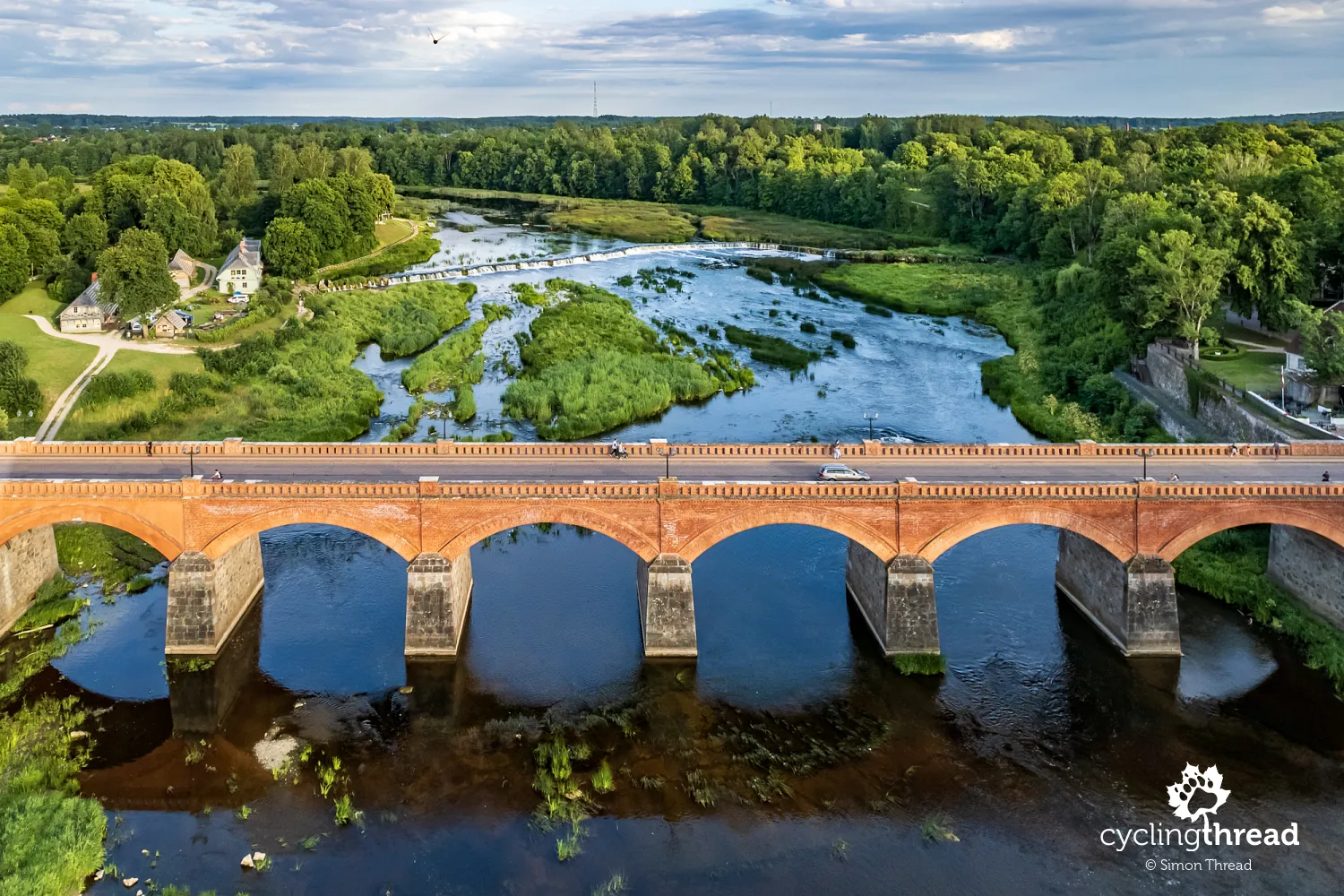
Peas with bacon, herring with cottage cheese
The mentioned dinner in Kuldīga was yet another opportunity to try local delicacies that perfectly reflect the character of the Courland region. We enjoyed a traditional sour milk soup, which was refreshing, slightly tangy, and an ideal start to the meal. We also had a dish of peas served with smoked bacon and onions - hearty and full of flavor, it’s a cornerstone of the regional cuisine. Finally, we tasted herring served with cottage cheese and potatoes, which, with its simple yet exceptional taste, was a perfect representation of Courland’s traditional culinary style. All the dishes were prepared in a straightforward, homely way, adding authenticity and letting us experience the true flavors of Latvia.

Not so bad, the famous Baltic gravel roads
Until now, while traveling between Liepāja and Kuldīga, we had mostly been riding on surprisingly high-quality local asphalt roads. It wasn’t until we passed Kuldīga that we hit the famous Baltic gravel roads for an extended stretch. I was a bit apprehensive about these routes, as every cyclist knows, gravel can vary greatly in quality. Sometimes riding on such roads is pure pleasure - the “natural” surface allows you to feel close to the surrounding nature and adds charm to the whole journey. However, there are times when these roads are made of gravel with stones too large in size, turning the ride into a multi-kilometer struggle. In such cases, every kilometer becomes a challenge, with the bike bouncing on every stone, demanding constant attention and extra effort. And although being in nature becomes less enjoyable in those moments, it’s still part of the travel experience, teaching patience and flexibility. After all, you never know if the road just around the bend might smooth out, making the ride much more satisfying.

Latvian gravel roads turned out to be quite decent overall. We often covered long stretches at a satisfying pace, allowing us to admire the surrounding landscapes and enjoy discovering new places. However, there were moments when we encountered sections that had to be tackled meter by meter, with every pedal stroke being a laborious fight with the surface. The challenge wasn’t just the uneven, rocky road, but also the dust, especially on routes frequented by local drivers. One such section, around Lake Usma, quickly discouraged us - the dust and traffic led us to change direction and circle the lake from the other side. This decision not only helped us avoid the unpleasantness but also revealed picturesque spots we would have missed if we’d stuck to the original route. Sometimes, flexibility in planning the route turns out to be the best solution, especially when comfort and the enjoyment of the ride are the top priorities.

Looking back, I’d estimate the ratio of good to bad roads was about 80/20 - not perfect, but still acceptable. Unfortunately, there’s no foolproof method to find the good ones before you set out and avoid the worse ones. It seems that the traffic level on a given route plays a key role. Where traffic is light, the surface tends to remain less damaged, and the road is relatively smooth, without loose stones or crumbling material. However, with higher traffic, ruts and uneven surfaces appear, and previously compacted roads become difficult to ride. That’s why it’s important to have the freedom to change plans and not stick rigidly to one route. In case of issues, it’s worth looking for alternative, parallel roads that might turn out to be better.
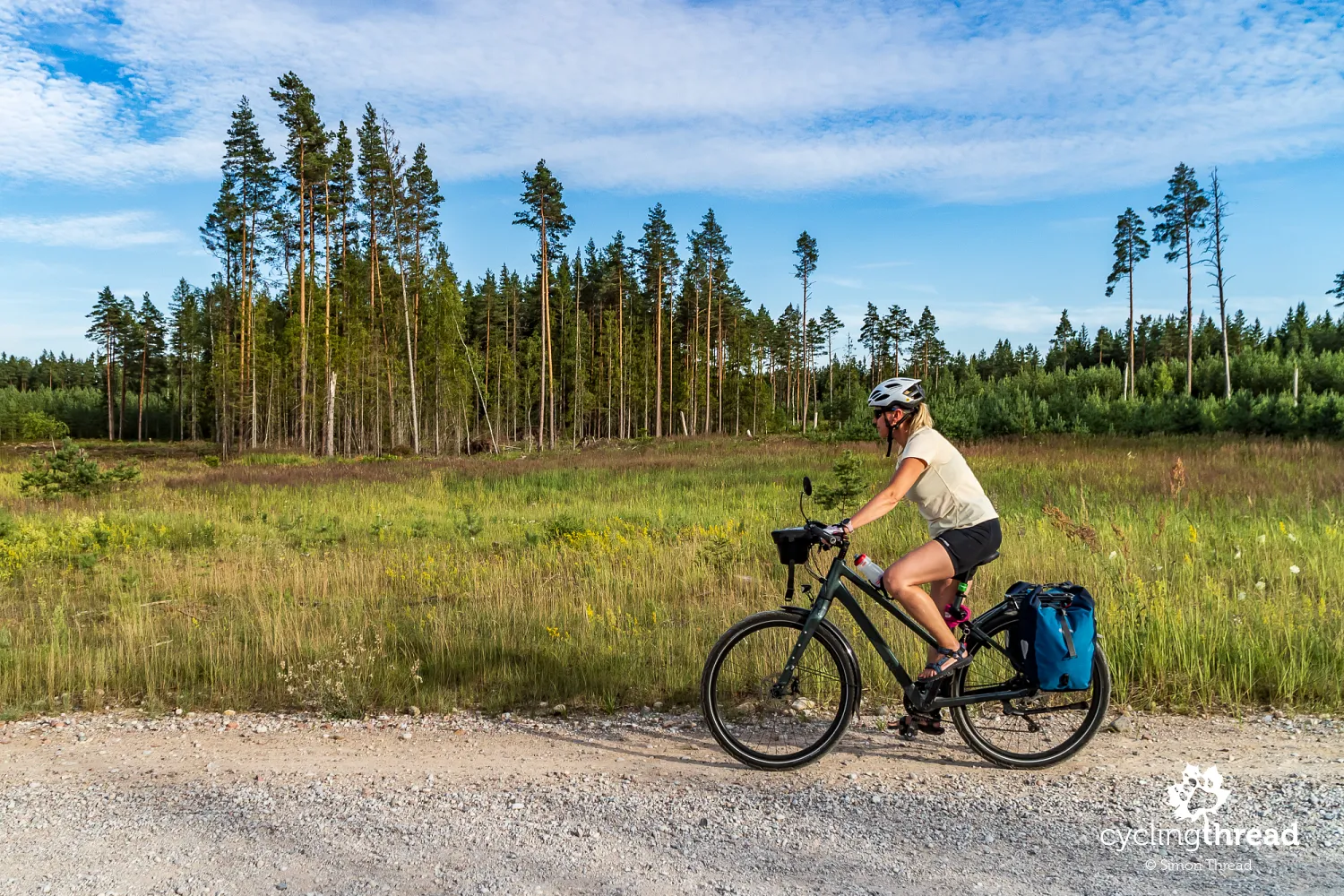
Across a wooden boardwalk through the Marshlands
Our gravel journey led us to Stiklu Purvi, a natural gem hidden within one of the forest complexes of western Latvia. Stiklu Purvi is a vast peat bog area, one of the largest of its kind in the region, encompassing both raised and transitional bogs. This place is distinguished by its rich flora and fauna, including rare plant species and birds for which it serves as an important habitat. Stiklu Purvi plays a key role in protecting biodiversity in Latvia. The only way to explore the reserve is via narrow wooden boardwalks that lead through the wetlands to a lookout tower, from which you can admire the vast peatlands. During the walk, bikes can be safely left in the forest, right by the entrance to the boardwalk, allowing for a full appreciation of this unique area on foot.

Ventspils welcomes us with a wide bike path
After another few dozen kilometers, alternating between quiet, empty asphalt roads and rather demanding gravel paths, we finally arrived in Ventspils. The city welcomed us with a wide, two-lane bike path, which immediately lifted our spirits after the exhausting rocky stretches. This comfortable section felt like a reward after the hardships, and the smooth asphalt was a relief. After a quick stop at our guesthouse, located in a charming wooden building in the city center, we dropped off our bags and set out in search of something to eat. Not far from the guesthouse, we found a restaurant whose menu immediately caught our attention, especially the section with local specialties. Sitting down for a meal, we were finally able to enjoy the atmosphere of Ventspils, knowing that we still had some sightseeing to do in this pleasant town.
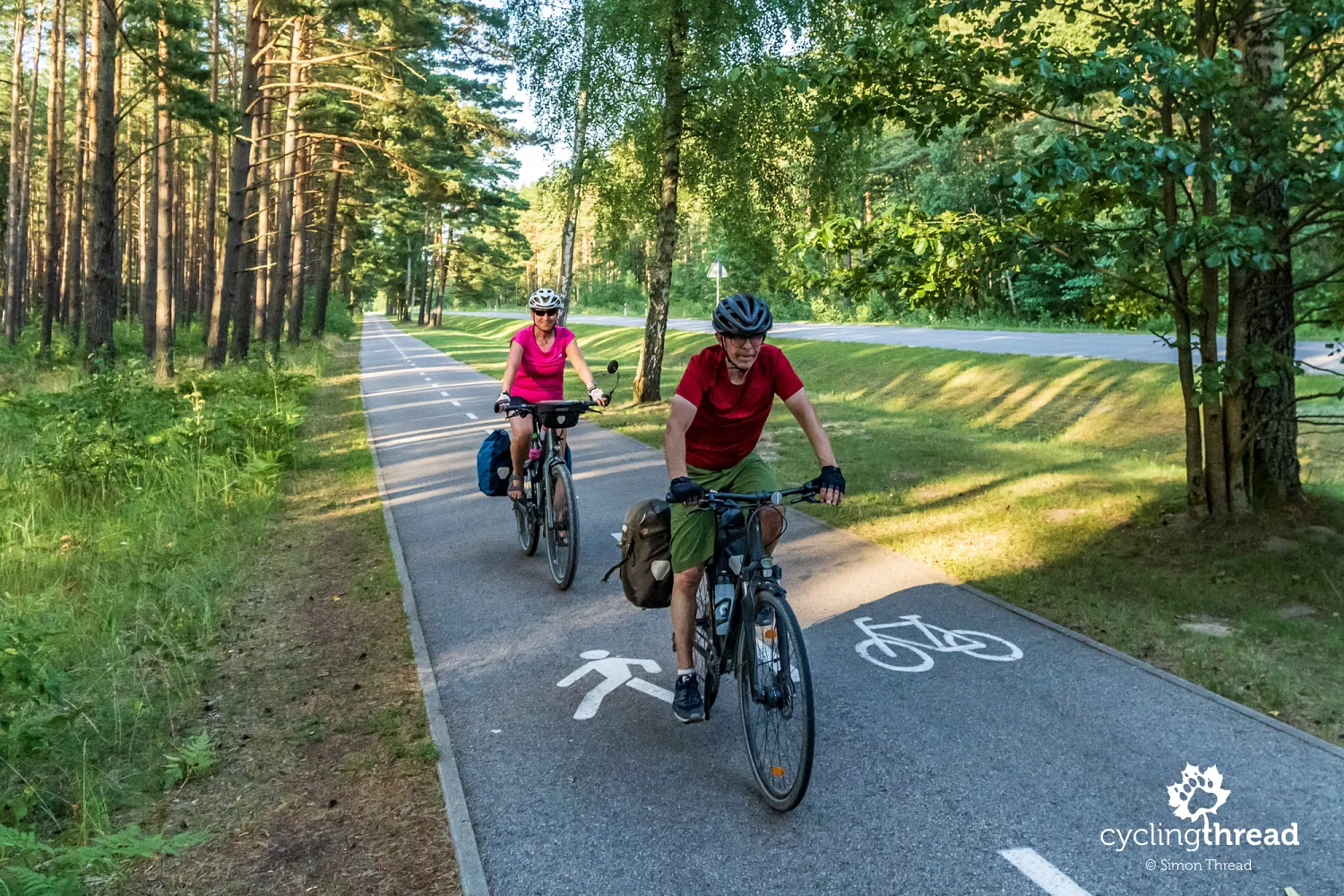
In Ventspils, we found an atmosphere similar to what we’d experienced in Liepāja. The similarity extended not only to the vibe but also to the city’s topography - both cities have an old part located by a port canal that divides them into two sections. In Ventspils, the key landmark is the former castle of the Livonian Order, which has served as a regional museum for several decades. Across from the castle, the colorful port cranes catch the eye, giving the industrial area a unique character. The old town, though small, has a cozy, intimate feel - you can explore it in just two 15-minute walks along its narrow streets, lined with historic buildings. However, it’s worth venturing beyond the obvious routes and heading towards the bus station, where you’ll discover impressive old buildings that speak to Ventspils’ rich history as an important port.
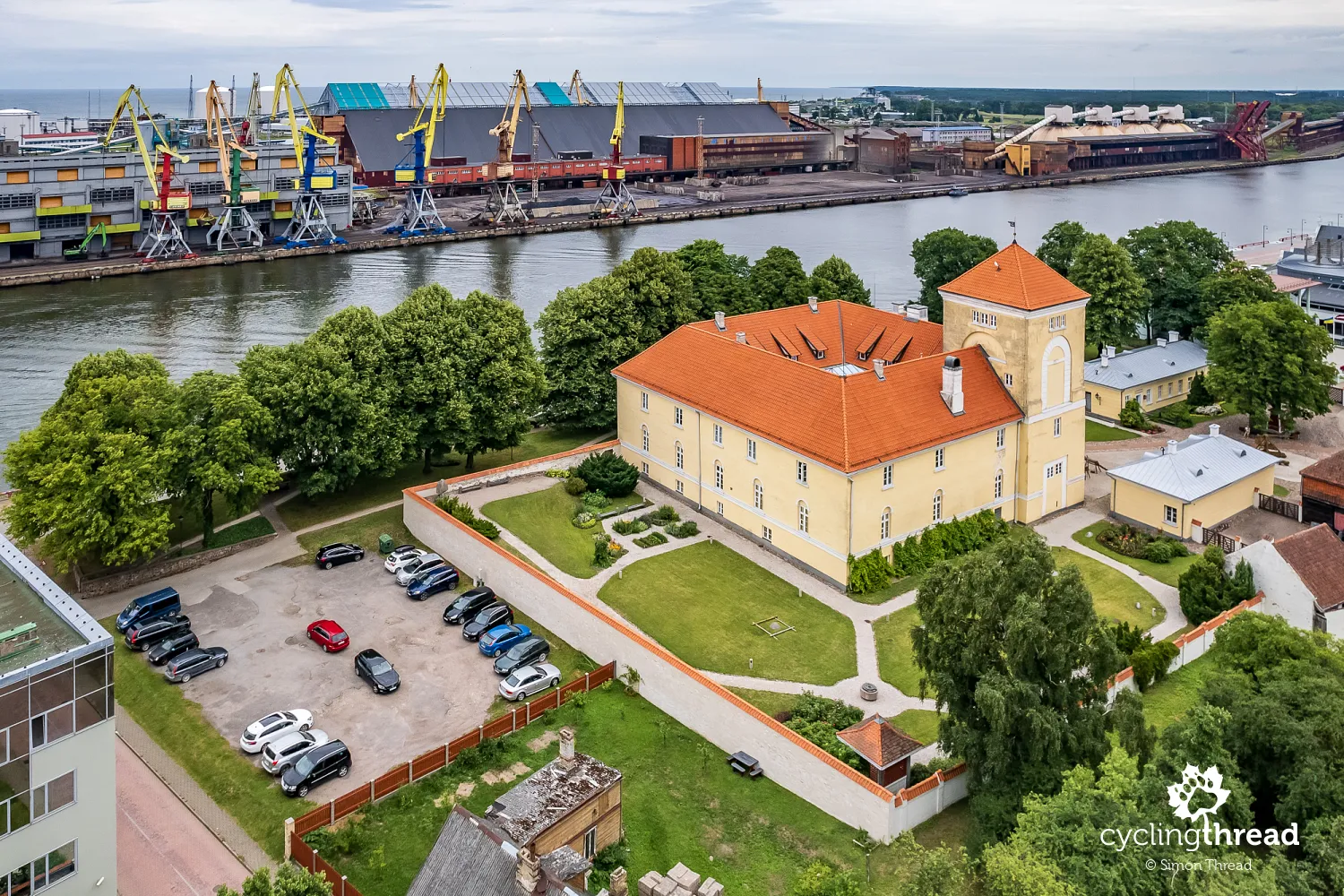
One of the most fascinating places to visit in Ventspils is the Seaside Open-Air Museum, located slightly off the beaten path from the city center. The museum immediately impresses with its modern, elegant exhibition pavilion, a perfect example of contemporary Latvian architecture - both aesthetic and functional. This is where the tour begins, with colorful and interactive exhibits introducing us to the rich world of local maritime and fishing traditions. Each carefully arranged scene allows visitors to immerse themselves in the coastal life that has shaped Ventspils and nearby towns for centuries. After exploring the modern pavilion, we can delve into the second part of the museum, where, behind the main building, a typical open-air section awaits, showcasing examples of traditional regional architecture. Here, you’ll find authentic fishermen’s huts and other buildings that transport you back in time, offering a glimpse into the everyday life of the Baltic coast from years gone by. The entire experience is a harmonious blend of history and modernity.

Soviet-era telescopes and a ghost town
The first significant attraction after leaving Ventspils is the Ventspils International Radio Astronomy Center (VIRAC), one of Latvia’s key research centers, located on the grounds of a former Soviet base in Irbene. The center specializes in radio astronomy, space monitoring, and satellite data analysis. From the road nearby, you can spot one of the two impressive radio telescopes used to observe galaxies, astronomical phenomena, and monitor signals from space. VIRAC runs numerous scientific projects in the fields of radio astronomy and space technology, and tours are available by appointment. On the way to VIRAC, you pass by a ghost town - a few abandoned apartment blocks once inhabited by Russian troops stationed in the area.

Natural atmosphere in the national park
An important stop on the cycling route through Courland is the Slītere National Park, located on Latvia’s northwestern coast, on the Kolka Peninsula. It’s one of the oldest and most beautiful national parks in the country, characterized by an incredibly diverse landscape - from dense forests, dunes, and peat bogs to picturesque coastlines. The park offers numerous hiking trails, including popular paths on wooden boardwalks that allow visitors to comfortably explore the wetlands and connect closely with nature. Bikes can be safely left in the surrounding forest near the trailhead, allowing for a leisurely walk through the park’s beauty. Although you have to detour a bit from the main route to reach "our" trail, the landscapes of Slītere more than make up for the extra effort.

Only thirty people speak Livonian
Just a few kilometers further lies the small village of Mazirbe, home to the Livonian Cultural Center. The Livs are an indigenous people who historically lived along the Baltic coast, primarily in western Latvia. Their culture and language, part of the Uralic family, are closely related to the Estonians. In the past, the Livs were closely connected to fishing and the sea, but modern social and historical changes have led to a drastic decline in their population. Today, they face the challenge of preserving their language and national identity, making them one of Europe’s most endangered peoples. At the cultural center, which also serves a surprisingly delicious pizza, I met a woman dedicated to preserving Livonian culture. She simply yet movingly explained how dire the situation is - only about 30 people currently speak the Livonian language!

Kolka Peninsula - like the Hel Peninsula
After another stretch north, we reached the Kolka Peninsula - a unique spot where the waters of the Baltic Sea meet the Gulf of Riga. Its strategic location made it difficult to access for centuries and left it almost uninhabited. The harsh climate, frequent storms, and limited access by sea created natural barriers to settlement and infrastructure development. Today, however, there’s no more isolation - visitors are greeted by a paid parking lot, and a short promenade leads directly to the tip of the peninsula. At the end, there’s a wide beach, reminiscent of our Hel Peninsula but with one important, and fortunately pleasant, difference. On the Kolka Peninsula, you won’t find the ubiquitous stalls selling cheap trinkets - this place retains its natural, wild charm, free from tacky commercialism.

Through a wooden boardwalk over unique marshland landscapes
Deteriorating weather and running out of time led us to execute an emergency plan to retrieve our cars, so the rest of the journey toward Riga was, unfortunately, viewed from behind the window. The weather improved only when we reached the next national park on our route - Ķemeri. Once again, we found ourselves amidst vast wetlands and peat bogs, where nature reigns supreme, and the only way to explore is via picturesque trails on wooden boardwalks. We chose the Ķemeru Purva trail, and during our walk, we admired the unique marshland landscapes, enveloped in silence and tranquility. It’s the perfect spot for nature lovers wanting to get up close to Latvia’s diverse flora and fauna, from rare peatland plants to numerous bird species. Ķemeri National Park, with its visitor-friendly design, is a great example of how nature can be wild yet accessible to tourists.

If only our resorts had such class
And just as our thoughts were turning toward Riga, we arrived in Jūrmala, a charming seaside town famous for its unique atmosphere, blending nature and architecture. Oh, if only our seaside "resorts" had the kind of class that Jūrmala exudes! It's a place where elegance meets the laid-back vibe of a coastal retreat. A distinctive feature here is the tree-lined avenues, with tall trees providing pleasant shade, perfect for walks at any time of day. Jūrmala is full of beautifully restored wooden Art Nouveau villas, giving the town a historic character. Notable is the Church of Saints Peter and Paul, which majestically closes off the popular promenade. Jūrmala is also a paradise for beach lovers - the long, wide, sandy beach, decorated with colorful elements, offers an ideal place for relaxation.
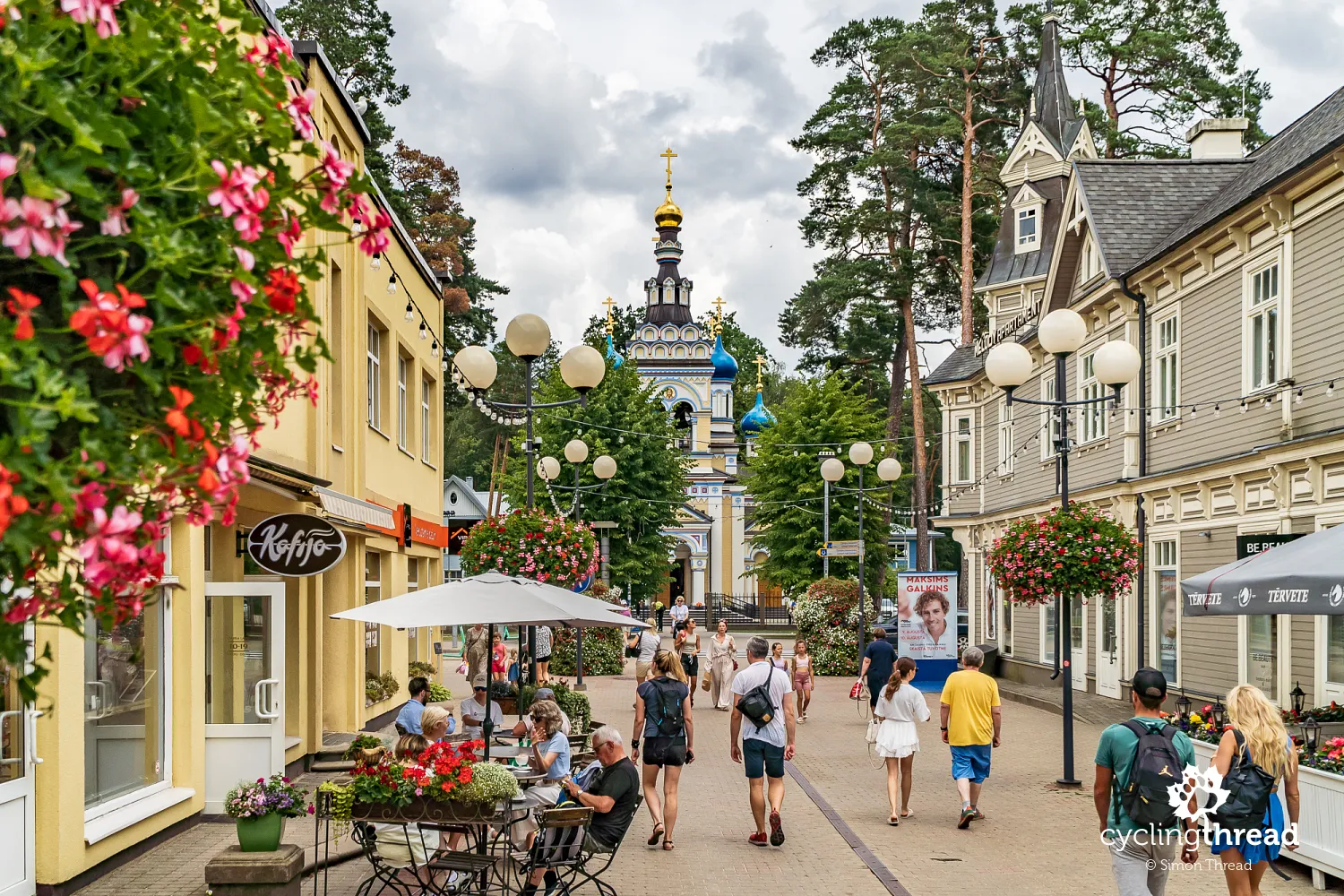
A stroll through the narrow streets of Riga
On the last day of our trip, we headed to Riga to spend the day walking around the Old Town and exploring its key landmarks. A year ago, I already got the sense of the city’s very pleasant vibe - the narrow, cobbled streets of the Old Town, surrounded by historic buildings rich in architectural detail, invite you to take your time strolling. Our attention was quickly drawn to the majestic Riga Cathedral, dedicated to the Virgin Mary, one of the largest medieval churches in the Baltic states - its interior captivated us with its impressive organ and Gothic vaults. As we wandered through the Old Town’s corners, we reached the Three Brothers - the three oldest medieval houses in Riga, a symbol of the city’s history. We also made sure not to miss the House of the Blackheads, whose beautiful façade is one of Riga’s most recognizable landmarks.

A bit further, we visited the famous market halls, located in former German zeppelin hangars moved from Liepāja. The halls were bustling with life and the scent of local specialties, creating the perfect place to feel Riga’s daily rhythm. It’s also a great opportunity to discover Latvian delicacies - from fresh fish to baked goods and sweets, and the famous local spirits. Our final stop was the War Museum, where we delved into Latvia’s turbulent history and the region. A particularly striking exhibit is the wreck of an off-road vehicle from the Twitter Convoy initiative, where Latvians support Ukraine in its fight against Russia. The vehicle, used to deliver aid to conflict zones, was destroyed during the war, and its presence in the museum is not only a testament to Latvian dedication but also a poignant reminder of the tragedy faced by the Ukrainian people.

One sad memory
Among all our pleasant memories, there is, unfortunately, one sad picture we take back from Latvia. It’s a... marmot farm near Alsunga, directed by a roadside sign, and one I also came across when researching places to visit. But, as it turned out, it wasn’t much of a farm at all - when we arrived, we found small metal cages housing marmots. We had expected a responsible farm with conditions suited to modern times and a developed country, but what we saw was a sad scene, with the animals seemingly mistreated. Unfortunately, when we arrived, the place was already closed, so we didn’t get a chance to ask about the sense or purpose of keeping these adorable creatures this way. We definitely do not recommend this “attraction.” Quite the opposite.
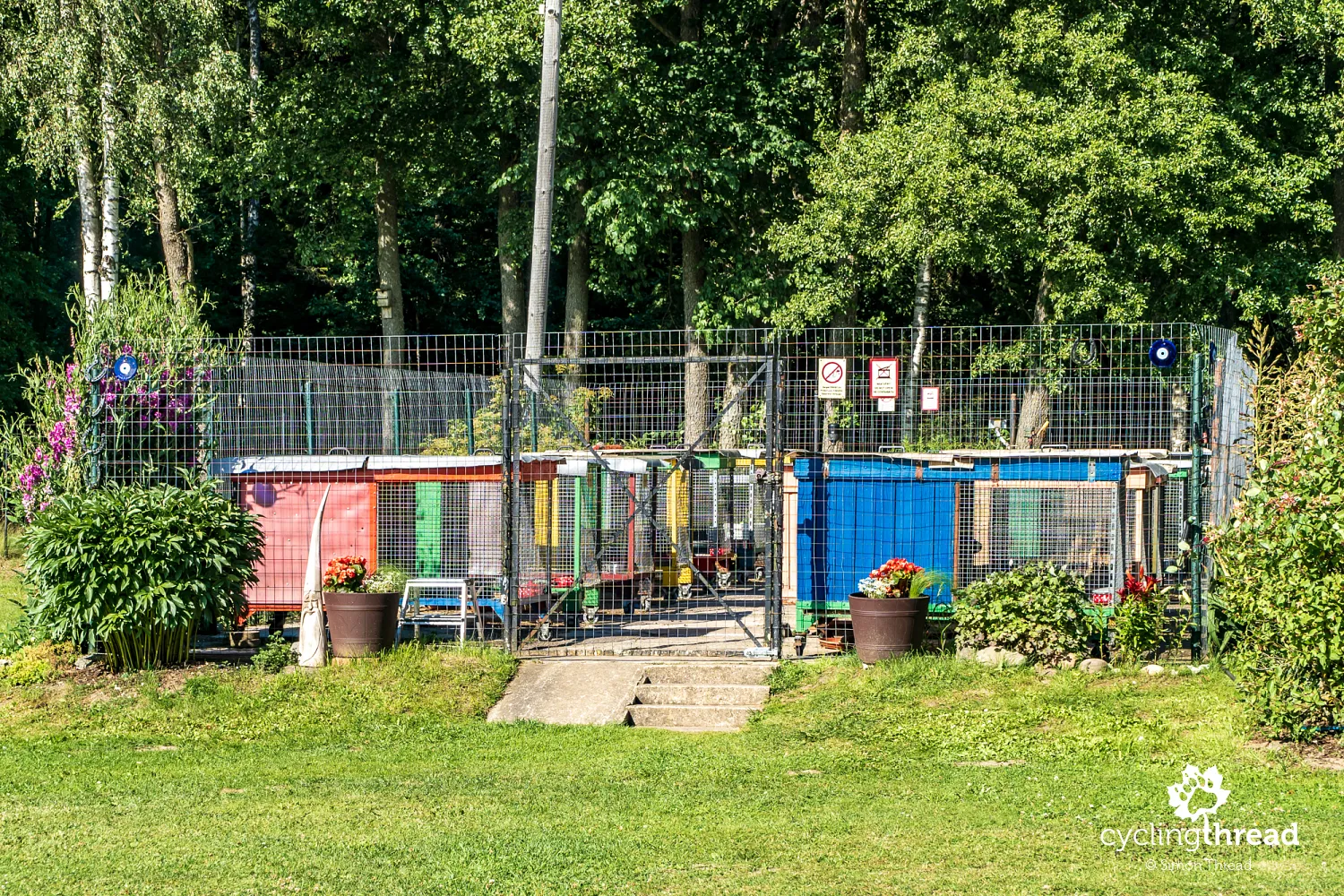
Something new every day in Latvia
Summing up our week in Latvia, it’s hard not to mention the diversity we discovered every day. Starting with Liepāja, with its impressive blend of history, modernity, and beautiful beaches, through peaceful seaside towns, and ending in Kuldīga with its unique wooden architecture - every day brought something new. Our route took us through historic Courland, which entertained us not only with its landscapes but also with its unexpected attractions. Highlights included visits to the Ķemeri and Slītere National Parks, where we could combine relaxation with nature exploration. The culmination of the trip was a stroll through Riga’s Old Town, full of monuments and history, including some very contemporary ones.

If you’re looking for beauty and tranquility
Our journey was a wonderful opportunity to immerse ourselves in Latvian culture, nature, and history, and the EuroVelo 10 cycling route turned out to be a great guide for discovering even the less obvious sides of Latvia. If you’re looking for a place that combines natural beauty, rich heritage, and tranquility, Latvia should definitely be on your list. We encourage you to explore this Baltic, still little-known country - and preferably by bike! :-)
Back to top














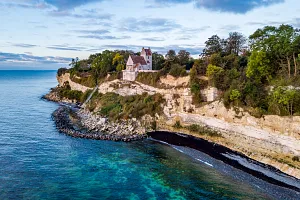
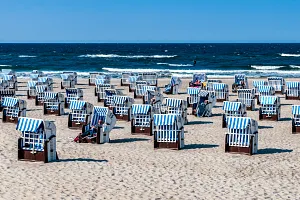
Your Comments
Add new comment